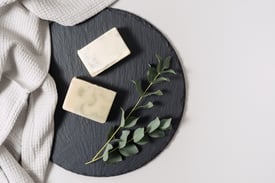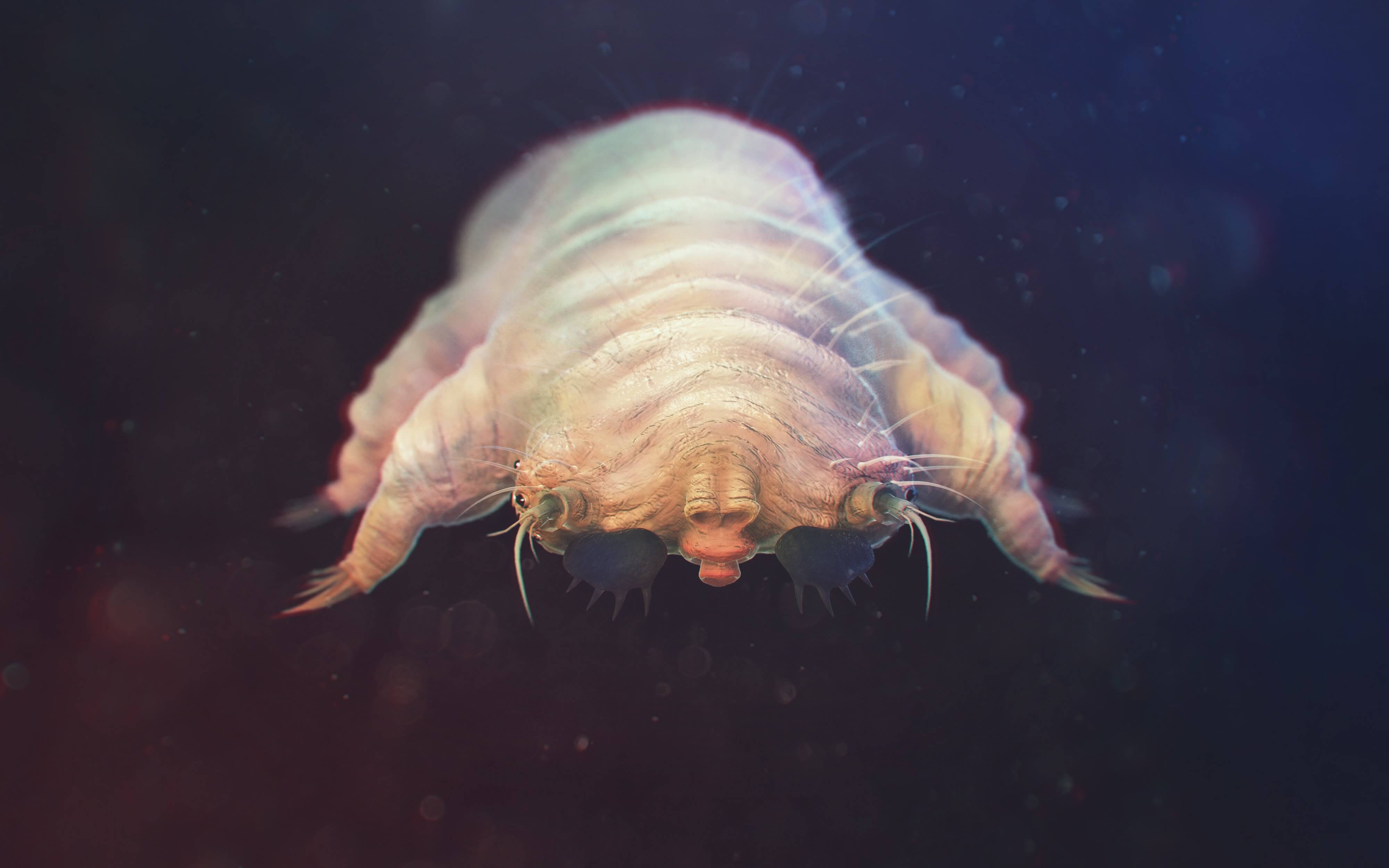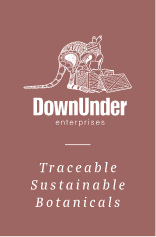Down Under Enterprises grows, produces, exports, and markets traceable
and sustainable native Australian essential oils and botanicals grown on our farm, Buhlambar, and from small growers across Australia producing unique essential oils and botanicals from plants native to Australia.
G’day mate,
We are certainly living in interesting times. Amid the global COVID crisis, protestors storm the US Capitol with yet-to-be-fully-appreciated motives - no masks nor social distancing amongst that lot! Over in Asia, WHO investigators have landed in Wuhan to begin their work to pinpoint the origins of SARS-CoV2. Meanwhile the entire world is grappling with the logistic challenges of a rapid global vaccination – but how well will these efforts work? Only time will tell.
One thing is clear, Consumers behaviors and perceptions have changed dramatically in the past year. The health and safety of one’s self and family remain paramount. From a Personal Care and Home Care perspective, there continues to be a focus on cleanliness – and an especially strong interest in naturally effective ingredients.
Could our beautiful Australian oils be any better suited to this new normal? From the well-known antimicrobial and extensively researched properties of Tea Tree Oil, to the respiratory (anti-fungal) and cleansing (anti-bacterial) properties of Eucalyptus Oil. Researchers are now discovering the unique capabilities of our 31 other native Australian oils in the popular FUNCTIONAL INGREDIENT SELECTOR TOOL, our online Applications guide.
Another current trend in the news is “waterless formulations”, for improved sustainability and efficiencies. Our “IN THE NEWS” section details this accelerating interest. Our Hydrosols offer both functional and sustainable formulation advantages.
Speaking of sustainability, learn more about our Sandalwood Oil and the sustainability efforts of our producer in Western Australia. Oh, and we’ve just added a solar-charged all electric Quad ATV to the farm for maintenance activities - our next step towards eliminating fossil fuels from our farm production
All the best – stay safe - and enjoy this month's newsletter. Thank you.
Sincerely,

IN THE NEWS
Waterless products with Essential Oils
Consumer interest in sustainability has seen a trend develop towards waterless beauty ingredients, according to MINTEL[1]. At Down Under we have seen this trend reflected in the increase of our hydrosol sales.

We’ve seen a 65% increase in new Hydrosol customers since 2016 with 75% of this made up of Tea Tree Hydrosol sales.
Last week’s Prospector® newsletter also highlighted this trend towards waterless with a VIDEO on how to produce a pH balanced shampoo bar.
Hydrosols are the water soluble byproduct of the Essential Oil distillation process making them a highly sustainable form of water replacement. Hydrosols are however also functional ingredients in their own right. Being water-based, they carry a softer version of the aroma and some of the therapeutic properties of the Essential Oil.
Reflecting further MINTEL intelligence, we have also seen an increase in soap companies interested in antibacterial and antiviral properties in natural ingredients for inclusion in product manufacturing for various types of cleansing products, including solid bars.
The addition of Essential Oils to soaps not only provides fragrance, but also offers the reassurance of added antimicrobial benefits in these consumer hygiene conscious times. Essentials Oils, such as our Eucalyptus Oil, may also offer natural and sustainable solvent functionality.
Reverting to solid soaps in place of liquid soaps provides further benefits. Solid bars have a lower cost per use than traditional water-based formats and, by eliminating water from the ingredients, distribution costs are lowered and formulation stability is greatly improved.
Overall, hydrosols and naturally therapeutic ingredients offer many sustainability and functional opportunities for Personal Care Manufacturers.
[1] https://www.mintel.com/blog/beauty-market-news/sustainable-skincare-in-2021-and-beyond

FARM UPDATES

We have a new toy on the farm! We have taken delivery of a new solar powered electric 4x4 ATV quad bike which will be used instead of the diesel-powered work vehicles to get around the farm for operations and general maintenance. Watch this VIDEO to see how powerful it is as compared to a gasoline/petrol powered ATV.
This new all-electric ATV will be a key element of our new Solar Powered Mobile Essential Oil Distillery by providing access to areas that are hard to reach, in order to access our more boutique wildcrafted botanicals.
This is one of many sustainability initiatives that we are passionate about. Stay tuned for more Sustainability news coming soon!

TRACEABILITY

Sandalwood Oil always captures peoples’ interest, but not often do we get to meet the people who produce this beautiful oil. Recently, we caught up with John and his daughter Lisa who produce our Premium Grade Sandalwood Oil . Located near Harvey, Western Australia, this family owned and operated business has been in business since 1997. Down Under has been working with them since 2004.
1. How long have you been involved in the steam-distillation of Australian Sandalwood?
We commenced production of Australian Sandalwood Oil in 2002 when, in conjunction with the Forest Products Commission (FPC), we began trialling steam-distillation for Sandalwood (Santalum spicatum) oil extraction. We recognized there was a market demand for a steam-distilled Australian Sandalwood Oil, and subsequently became the first to utilize steam-distillation techniques for S. spicatum in Australia. At that time, the other main producer of Australian Sandalwood Oil employed a process called solvent extraction, using hexane as the solvent. Following success of our steam distillation trials, we entered the exciting -- but extremely challenging -- Sandalwood Oil market, and we continue to operate our steam-distillation processing plant from our 229-hectare property in Western Australia.
Since then, we have distilled in excess of 700 metric tons of Australian Sandalwood, obtained from both the FPC and private Indigenous Aboriginal sources. Our distillation plant is also used each year to process our Australian leaf oils.
We produce an Australian Sandalwood Oil unique to the market, the only one with an α-santalol content of greater than 25%, as well as a Standard Grade (ISO standard) Australian Sandalwood Oil (15-25% α-santalol).
2. Where is your Sandalwood grown?

We purchase our wood from both the Western Australian (WA) Forest Products Commission (FPC), the government body responsible for the sale of sandalwood harvested from Crown Land, and from private sources licensed to harvest an agreed annual quota. Harvesters of Australian Sandalwood are required to conform in all respects with the environmental and operational requirements as controlled by the WA Forest Products Act 2000 and the Biodiversity Conservation Act 2016 to maintain a sustainable harvesting operation.
All of the sandalwood we process is wild-harvested from trees which grow naturally across WA. The quality of oil extracted from trees from different areas of the state varies greatly, with santalol levels increasing the further north one travels in WA. We have distilled the same classification of wood from different regions of WA, and the percentage of α-santalol in the oils has ranged from 5% to 25% in log wood, and 17% to 38% in roots wood. We have very little control in terms of specifying regional preferences for the wood supplied by FPC; in order to produce our Premium grade of oil, great care is taken in assessing the wood we purchase, testing the oil extracted from each classification of wood and batching an oil which meets our specification of greater than 25% α-santalol.
3. What are some of the traditional (ethnopharmacologic) Aboriginal uses of Sandalwood?
There is a long history of Indigenous traditional use of sandalwood in the central desert of Australia, with Aboriginal people historically believed to have an understanding of both its healing properties and its use as a food source. Sandalwood is widely known for its anti-microbial activity; poultices of ground wood and herbs have traditionally been applied topically to wounds and infections for healing. The wood has also been used for carvings and in traditional ceremonies.
4. How has the Sandalwood Oil market changed since the big VC money purchased some of the players in the market?

Developing the technology to efficiently distil sandalwood is definitely only part of our sandalwood oil story. Obtaining a consistent and reliable source of wood, and then developing and maintaining markets are both of equal importance, and both have in fact proven challenging. There was major upheaval in the industry when, following a Parliamentary Inquiry into the Sandalwood Industry in Western Australia in 2014, an open tender for purchasing wild-harvested wood from Crown Land was released. There now exists a select panel of approved sandalwood distillers who may bid for each parcel of wood released by the government for oil distillation. As a relatively small business, we are competing with the big Venture Capital-backed players each time we bid on a parcel of wood. Unfortunately for us, we were caught in the crossfire of a very fierce competition between these deep-pocketed new players. Consequently, turmoil in the Australian Sandalwood Oil market led to a level of uncertainty with essential oil buyers across the globe. However, we now believe the "dust is settling", with a renewed stability in the Sandalwood market.
5. What sustainability practices do you have in place on your land?
We are committed to maintaining an operation that minimizes its impact on the environment. We utilize a “fit for purpose” oil processing plant with minimized boiler emissions as a result of expert design of energy requirements. We ensure the minimization of waste water with careful attention to water mass flows. With the processing plant being located on our farm, we are able to use the cooling water from the distillation for farm irrigation as part of a closed loop system. In relation to our farming business, although not claiming organic status, we have adopted sustainable farming practices, with minimal and careful use of herbicides and fertilizers that are generally approved for organic certification.
We endorse a “no tolerance” approach to the illegal harvesting of sandalwood and support the sustainable management of this beautiful natural resource as defined by the Forest Products Act 2000 and the Biodiversity Conservation Act 2016.
Learn more about our Sandalwood growers and our other Wood Oils producers on this interesting VIDEO journey around Australia.

EMPLOYEE PROFILE

In this month's Meet The Team, we caught up with Juliana, our Sales Support Executive.
What is your role at Down Under Enterprises? Currently, I'm the Sales Support Executive. My main role is basically to make sales reps’ lives easier, unifying and facilitating all the internal information needed to accurately process a sales order, such as freight quotes, additional documentation, product availability, delivery dates,etc...
I’m also part of the Quality team, leading the team on the investigation and resolution of Customer Complaints and any resulting CAPAs (Corrective Actions, Preventive Actions).
What did you do before joining the team at Down Under? I worked for more than 10 years as Office Manager for different companies in the events production industry, where I was responsible for managing the internal and external resources needed to create different types of events, such as brand activations, concerts and music festivals.
What led you to want to work in the natural products industry? My primary motivation was to work in an industry in line with my lifestyle, which has significantly changed during the last 5 years. During this time, I have developed a strong awareness about the positive and indisputable impact of natural products to improve my quality of life, so the transition to this industry was very organic.
What do you love most about what you do? No two days are the same! There is always a new challenge and something new to develop and learn; and everything I do has a direct impact in the business.
What’s your favorite way to spend the weekend? Sydney is perfect for outdoor activities so I like going for a swim, a walk or a run. I also like to spend quality time with my family and friends exploring new places around the city.

SUSTAINABILITY
UN Global Goals - Down Under's Communication On Progress

Our company Sustainability program is built upon the structure of the United Nations Sustainable Development Goals.
As a signatory to the United Nations Global Compact program for business sustainability, Down Under has an annual obligation to report to our stakeholders on our progress towards the Ten Principles of the United Nations Global Compact. These Principles encompass the areas of human rights, labor, environment, and anticorruption.
Download the report HERE to review the full list of activities undertaken by Down Under Enterprises.
SCIENTIFIC PAPER
Tea Tree Oil Effective against Chronic Blepharitis
A recently published double-blinded, randomized clinical study (n = 90) highlights that Tea Tree Oil (TTO) can effectively improve ocular surface parameters including Demodex count at 3% concentration.[1] This is a much lower concentration than reported in previous studies.
Chronic Blepharitis is a condition of the eyes that can include redness, burning sensation, irritation, tearing, eyelid crusting and visual problems such as photophobia and blurred vision. The Demodex mite (image at right) can cause blepharitis by carrying bacteria on its surface including Streptococci ssp. and Staphylococci ssp.[2]
The double-blinded randomized clinical trial separated patients with Chronic Blepharitis into two groups. Group-1 was administered with a basic gel containing 3%(w/w)-TTO and group-2 (advanced gel containing 3%(w/w)-TTO plus essential oils and vitamins. In both groups, the mean Ocular Surface Disease Index score decreased (p<0.001), tear breakup time increased (p<0.004). In group-1, Demodex presence decreased from 42% to 27.8%; in group-2 from 54.2% to 20.6% (p<0.004). IL-1β and IL-6 decreased in group-2 (p<0.050). TNF-α decreased in both groups (p<0.001). The researchers reported that both formulations improved ocular surface parameters.
Complications associated with high levels of demodex presence have been observed in populations with Rosacea, increased age, those who wear glass and with eye lash extensions.
This study reveals that pure Australian Tea Tree Oil, at a 3% concentration, could be a therapeutic solution to Chronic Blepharitis associated with Demodex infestation.
[1] Ergun SB, Saribas GS, Yarayici S, Elmazoglu Z, Cardak A, Ozogul C, Ilhan MN, Karasu C, Evren Kemer O. Comparison of Efficacy and Safety of Two Tea Tree Oil-Based Formulations in Patients with Chronic Blepharitis: A Double-Blinded Randomized Clinical Trial. Ocul Immunol Inflamm. 2020 Aug 17;28(6):888-897. doi: 10.1080/09273948.2019.1644349. Epub 2019 Aug 20. PMID: 31429629.
[2] Liu J, Sheha H, Tseng SC. Pathogenic role of Demodex mites in blepharitis. Curr Opin Allergy Clin Immunol. 2010;10(5):505-510. doi:10.1097/ACI.0b013e32833df9f4

FEATURED PRODUCT
Australian Sandalwood

The aroma of Sandalwood Oil can be found in many iconic perfumes in brands such as Yves Saint Laurent and Dolce & Gabbana. Sandalwood is a favorite with perfumers for its long-lasting base note scent and fixative properties.
Interestingly, in Eastern cultures Sandalwood has been traditionally known and used as a therapeutic oil rather than a fragrance. Indian Sandalwood is high in Santanol which gives it a sweeter aroma but doesn’t have the level of therapeutic properties seen in the Australian Oil, due to the lower levels of the other therapeutic constituents.
Australian Sandalwood has a more complex and woodier aroma with increased antimicrobial and antiviral properties due to other constituents present in higher amounts.
Santanol is a lipid soluble compound which means it stays on the skin to provide both fragrance and therapeutic properties when used in products such as face washes and soaps.
This precious oil is sourced from Sandalwood Trees that ideally mature until 25 years of age before the whole tree is harvested. Unfortunately, the demand for this oil led to the decimation of the Indian Sandalwood forests before any regulation was enforced.
Australia now produces nearly 80% of the world’s legally harvested Sandalwood, with government backed support and indigenous programs in place. Down Under’s supply of Sandalwood is guaranteed with full traceability.
Learn more about Australian Sandalwood via this recorded UL Prospector webinar sponsored by Down Under Enterprises.
WHY YOU SHOULD BE WORKING WITH THIS PRODUCT
BENEFIT 1 –100% Australian origin with government-backed Traceability to the source
BENEFIT 2 –Sustainably grown and harvested in Australia
BENEFIT 3 – Government managed sustainable harvesting practices
BENEFIT 4 – Beautiful aroma complements its functionality

